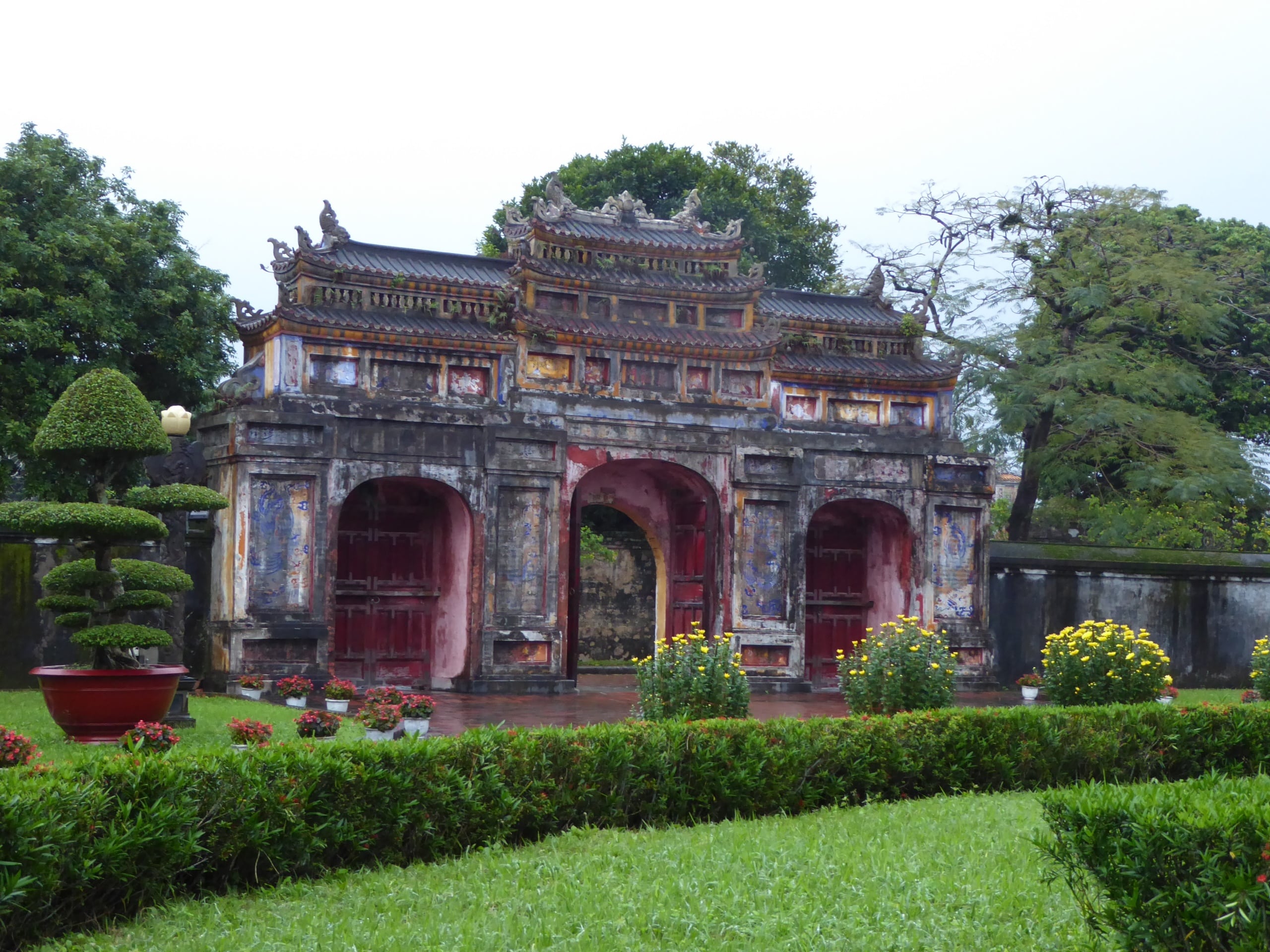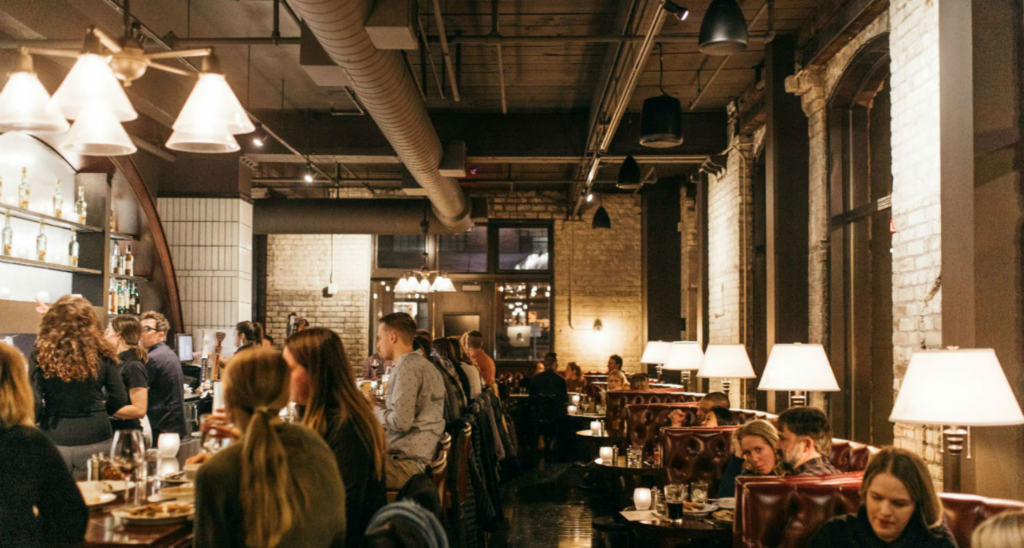September 14, 2016
What can actually be carried on a motorbike (moto)?
Here’s a handful of favorite things we saw being transported on moto in Vietnam:
- Kumquat trees. 10-feet+ high, and in full bloom.
- A 30-year-old TV set. Maybe you’ve forgotten the size of pre-flat screen TVs? HUGE.
- A fish tank. With fish. And an operating motor.
- Giant pane of glass. Think picture-window size.
- Yes, a refrigerator.
- Families of five or six. Families of four? Commonplace. Families of five or more are the only one’s photo-worthy.
The other thing that makes complete sense about the moto transport (or, you know, not so much): Children under six are not required to wear any type of helmet. Because we all know babies and toddlers are more durable than adults. Really?
The motos rule the road in Vietnam. Even more so than Bangkok or other southeast Asian cities we’ve visited. So much so that walking pedestrians fall a distant fifth in line behind motos, buses, cars, and bikes—in that order. So it became an ongoing game for us to find the craziest thing on a moto during our recent trip.
The first thing you notice about Hanoi is the chaos of traffic, led by the aforementioned motos. Lanes are completely ignored, and traffic lights primarily serve as decorations. You just go. It doesn’t matter if you’re faced with lanes of traffic, and you’re staring down a line of motos, buses, or cars. You literally just go.
If India was like the video game Frogger, this is the like the skies filled with planes and no air traffic controller.
Other than that…
The next thing you notice about Vietnam is the industrious people. They all believe in free enterprise and take pride in working, making, or selling. It’s an honor for them to have their own business and to sell their wares, even if it’s among 30 other clothing or shoe stalls on the same small street. If you come with any preconception that Vietnam operates like a communist country, it will change immediately.
A steady pace is critical. If you stop, they will hit you. If you run, they will hit you. If you don’t go, you’ll be at that same intersection for four days waiting to cross. Another good way to cross is to have a blocker, someone or something to part the seas, even if it’s a 50-pound Vietnamese girl. Hey, it works, okay?
Our trip began in Hanoi at the Metropole Hotel at the beginning of Tet (the lunar New Year celebrated in China and Vietnam). The flowers and decorations were everywhere, and the city was completely alive.
The Metropole is the hotel in Hanoi—make sure you stay in the old building instead of the Opera wing. It has welcomed guests ranging from Graham Greene (who wrote The Quiet American there) to Joan Baez to Charlie Chaplin to Jane Fonda. It’s got the best location in the city, a close walk to Ho Kiem Lake and the Old Quarter. If you don’t stay there, at least dine at La Terrasse and watch the street energy and the badminton players.
In Hanoi, the Old Quarter is the hero. Walk (don’t wander, you’ll get hit by a moto), or hire a cyclo to take you through. The Old Quarter cannot be described with words or images. You just have to see and explore it for yourself. The sidewalks are filled with selling stalls, cooking, grilling, eating, drinking, auto repair, and moto parking, and the tiny streets are filled with traffic. It’s complete sensory overload. And in the midst of the chaos and crazy, the shop owners are out there scrubbing with pride the few feet of storefront sidewalk they own.
The irony is that now there is a law in Hanoi that you cannot walk on the streets. Why ironic? Because there’s really no place to walk other than the streets—certainly not on the so-called “sidewalks”—so everyone on two feet could theoretically be fined.
Yep. It falls into the same “huh?” category as infants and toddlers on motos without any protection.
Our trip with Backroads started in Hanoi, visiting the few remnants of the war, even though it’s clear the very young society has moved on from every war and occupation in Vietnam’s history. The Hanoi Hilton still stands, as do various locations where the shot-down B52 bombers can be seen peeking out of ponds and yards.
The eating in Hanoi shows off the heavy influence of French on the Vietnamese and Vietnamese on the French. The street vendors are best navigated, and should be tried, with an in-the-know local or guide. The restaurants are plentiful, and a favorites include Madame Hien and La Verticale, both from French chef Didier Corlou, and a few favorite tourist spots that any concierge will be happy to recommend—Home and Ly Club. For lunch, Ngon is a good stop (and is a bit of chain, with locations also in Saigon).
Hanoi for us was a classic two-day town. From there, either head east to Halong Bay (the place you see in all the classic tourist pictures), or south down the long, skinny country.
I heard (but didn’t confirm) that the country extends as long as the US west coast, from the Canadian border to the Mexican border.
From Saigon, we flew to the Imperial City of Hue (for us dumb Americans, the pronunciation sounds close to “Way”). The city is located right on a strategic and cultural border between north and south Vietnam (look up your history to understand why the distinction between north and south is significant).
We had the opportunity to begin our tour of Central Vietnam on bike. Rice patties, shrines, ornate tombs aplenty, small villages with selling stalls and markets, and chickens everywhere.
In the countryside we learned that weddings are traditionally pink, and funerals are white. And the people work hard everywhere and never take a day off. There are no weekends in Vietnam. The kids are spectacular. All had a huge smile, a wave, and a friendly hello. (When I returned with Zin Chao, they all laughed.)
The city of Hue itself has the Citadel, a UNESCO World Heritage site, which has been beautifully preserved and partially restored. It’s a real operating city, not completely filled with tourists, so you can truly get a sense of the people and the culture.
From Hue, we had the beautiful opportunity to bicycle over the Hai Van Pass to Danang, eventually making our way to Hoi An. The Hai Van Pass, even if you don’t want to tackle by bike, is worth the journey to see cows and baby goats wandering on the road, and the view on both sides and from the top is spectacular.
After descending after our incredible bike ride up, we skirted around Danang and ended up just a little south of Hoi An at the Nam Hai on the South China Sea.
There are a few not-to-be-missed hotel experiences in Vietnam. The Nam Hai is one, and the Six Senses, closer to Saigon, is the other. Note: The entire Nam Hai hotel is a tripping hazard. Multi-levels may work in an emperor’s palace or in the hierarchy of culture or religions, but not so much with wine-drinking tourists.
Hoi An was the largest harbor in SE Asia until Danang took over, and it formerly was known as the best place for trade from Europe, China, India, and Japan. It’s also a UNESCO World Heritage site on the Thu Bon River, with a Japanese bridge from the 16th century. Taking a dragon boat down the river gives you the chance to watch the fisherman cast their wide nets.
Hoi An is known for the lanterns. And lots and lots of tourists. But it’s still a magical little city, especially at night. One of our general rules of thumb is that the better the location of a restaurant, the worse the food. One restaurant right on the river in Hoi An, Mango Mango, defied that theory.
One of the last things we did in Hoi An before leaving was take a real Vietnamese cooking class. For those like me who believe “culinary” and “cooking” are really code for “finding a good restaurant,” Vy’s Kitchen and Cooking School was still fun. Disclaimer: Drinking wine really helped, too.
One of us (hint: him, not me) ate a duck embryo, then proceeded to describe the crunch. I mean, really?
Our last stop in Vietnam was the vastly different Ho Chi Minh City.
The world still calls it Saigon, but the prominent statue of Ho Chi Minh in the center city may disagree.
In comparison to Hanoi, it’s huge, busy, prosperous, and more progressive/Western feeling. Size aside, it’s like comparing Kyoto to Tokyo. One is the more historical cultural center with actual remnants of the past (Hanoi and Kyoto), the other is the big, vibrant city (Saigon and Tokyo). Grahame Greene would not recognize it.
Like Hanoi and everywhere else in Vietnam, it is not a walking-friendly city. The sidewalks are reserved for market stalls and moto parking. In fact, in Saigon, they actually rope off sidewalks in for moto parking and force the walking pedestrians to the busy street.
We were lucky enough to visit the city during New Year’s Eve of the Lunar New Year and the beginning of the year of the monkey. That means flowers. Everywhere. Our first night there, we wandered from our hotel, the Park Hyatt, down to Nguyen Hue. They closed the entire street and filled it with flowers. The people were smiling, well-dressed, and everywhere.
The next night was New Year’s Eve, and it ended with fireworks from the Saigon River tunnel.
The last key thing we did in Saigon is to search for the perfect banh mi. They’re supposed to be everywhere, right? Yes and no. There are many places to seek, but many don’t open until 3:00, or 4:00, or 5:00 or not at all. Or maybe that day they’ll open from 11:00–3:00 only. Opening times are more like suggestions, I guess, so patience and determination do come in handy. Our quest led us to two: Bánh Mì Huỳnh Hoa and (and not to be confused with) Bánh Mì Hồng Hoa. The quest was worth it.
A few last tips from Vietnam:
- Pho is not pronounced “pho.” It’s more like “fuh.”
- French influence means you’ll see a lot of colonial French architecture, and French wine can still be found (Vietnam is one of the only countries we didn’t find native sparkling wine).
- The Vietnamese Dong makes you an instant millionaire when you exchange US dollars, even though in Vietnam, many people make an average of a dollar a day.
- The food is legitimately flavorful with all the herbs. Lemongrass, Vietnamese basil, and so much more.
- It’s home to the most beautiful children on earth practicing their English. Politics, war, economics, and religion all fall away when you see the bright smile and hear the loud hello of a beautiful Vietnamese child.



